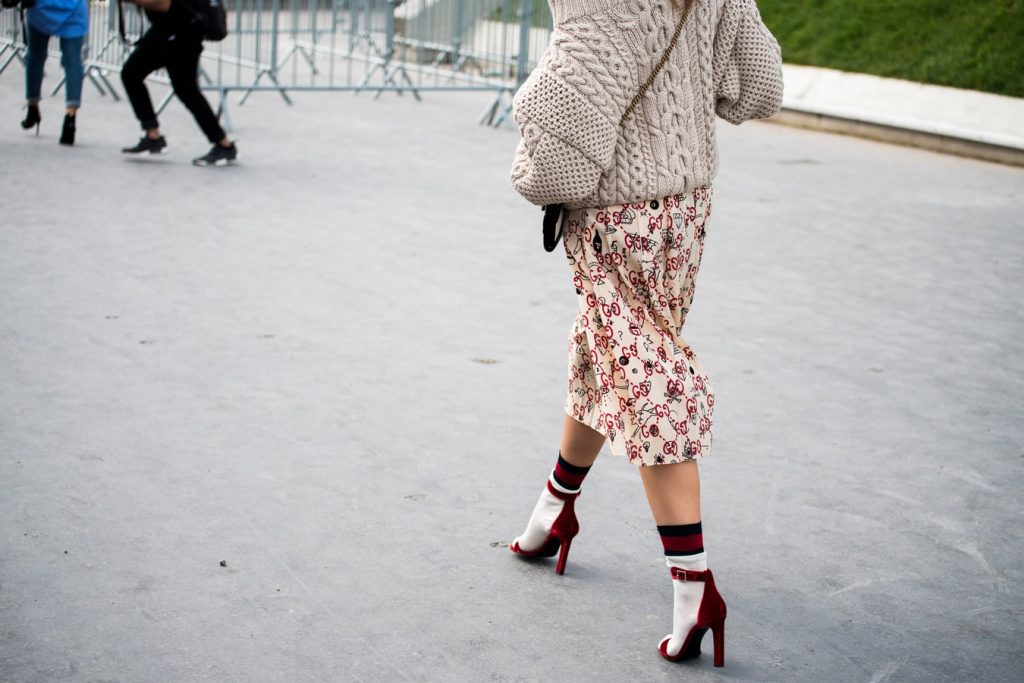There have been many reports released as of late that center on the striking amount of waste produced by the fashion industry, with many including images that depict vast wastelands filled with clothing, many of them located in developing nations. As for how clothing gets from store shelves to beaches in Ghana and Chile’s Atacama Desert, traditionally, they are “donated” from wealthy nations to developing ones, but in many cases, the items end up as waste in landfills. This demonstrates the fact that the end user becomes responsible for the environmental impacts and disposal of the items, and it begs the question: Who should be responsible for the problem of discarded garments and accessories?
Extended producer responsibility
Extended producer responsibility (“EPR”) is an approach that places significant responsibility for the disposal of manufactured goods on the manufacturer. The aim is to incentivize manufacturers to extend the life of their products and to shift some of the environmental costs associated with product disposal from the consumers and the environment to the producers themselves. While such policies remain scarce around the world, this is set to change with the global focus on the circular economy, particularly in the retail-clothing, textile, footwear, and leather (“R-CTFL”) industry.
In South Africa, the paper and plastic packaging, lighting and electronic and electrical goods sectors are regulated by the National Environmental Management: Waste Act, 2008 read with the Extended Producer Responsibility Regulations, 2020 (“EPR Regulations”).
In France, numerous EPR schemes apply to a variety of industries, including the textiles and footwear industry. The French EPR program is the most extensive in the European Union and is set to double in its application from 12 to 22 industries over the next three years. Although the collection of old clothes by the producer responsibility organization (“PRO”) in France is effective, once collected there are no facilities in the country to recycle or upcycle the textiles. Furthermore, manufacturers are charged a mere EUR0.01-0.06 per clothing item, depending on the type and durability of the garment and the incorporation of recycled fibers. These measures do not seem to disincentivize overproduction and once collected, items are likely to end up elsewhere.
The South African EPR Regulations provide various options for the management of an EPR scheme. Independent PROs have been established and producers can voluntarily join or establish and manage an EPR scheme in-house. However, unlike France, which has a single PRO per industry, the options available in South Africa lead to competition concerns since not all producers join the same PRO, resulting in hefty administration costs for those who comply. It has also been argued by the industry that the penalties for non-compliance are not persuasive enough.
Pre-loved & the secondary market
Interestingly, luxury and fast fashion brands alike have recently indicated the inclusion of second-hand clothing platforms to serve their existing customer base. The second-hand market is set to grow globally to $14.5 billion in the next five years. This shows that voluntary EPR programs may prove more effective than legislative interventions. For a successful second-hand market to exist, overproduction must be minimized, and the quality of the clothes improved for longevity.
Many industry specialists worry that the current speedy trend-based brands are interested in the financial value of this sector and present another example of greenwashing. Perhaps the potential profits associated with the growing second-hand market will incentivize improvement or at the very least, better quality of virgin items to ensure longevity for the second-hand market.
Local retail-clothing textile, footwear & leather industry
In South Africa, landfills are running out of capacity although clothing and apparel are not yet a constraint in this regard. The local R-CTFL industry must regain its market share which is recognized in the South African Retail-Clothing, Textile, Footwear and Leather Value Chain Masterplan, signed in 2019. Signatories to the R-CTFL have committed to local production of 65 percent by 2030. The list includes: (1) Truworths Limited; (2) Woolworths; (3) Mr Price; (4) the Foschini Group; (5) Edcon (Edgars); (6) Pepkor; and (7) Pick n Pay Clothing.
For now, with rising costs, current and historic imports of cheaply made clothing may be all that many South Africans can afford. However, the environmental impacts should not be borne by the consumer alone. It appears that the EPR scheme may be particularly well suited to synthetic clothing items. The influx of clothing from abroad caused a stumbling block for the local manufacturing industry. An EPR program for the R-CTFL industry could assist in the prevention of R-CTFL wastelands and provide environmental regulation of excessive imports.
EPR scheme to assist local industry & curtail excessive imports
The EPR Regulations seek to hold producers, importers, brand owners and in some instances retailers, responsible for the entire life cycle of a product. The ultimate goal is a “cradle-to-cradle” as opposed to a “cradle-to-grave” fate for products included in the EPR scheme. The inclusion of importers and brand owners would result in the application of the EPR regulations to imported textiles and clothing.
An intelligently drafted EPR scheme for the R-CTFL industry could solve industry waste mountains and hold importers accountable for the ultimate environmental impacts of the R-CTFL industry. The implementation of such an idea would be environmentally conscious and would encourage the production of clothes that can stay in circulation for an extended period. Fashion trends are often circular or cyclical, so clothes which have the potential to circulate with repairs or upcycling over time should be the gold standard.
Carlyn Frittelli Davies is a Consultant in ENSafrica’s natural resources and environment practice.
Njabulo Mchunu is a Candidate Legal Practitioner at ENSafrica.











